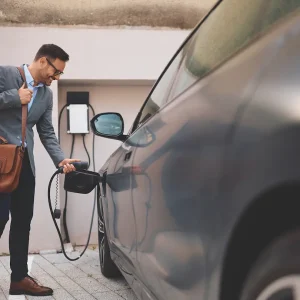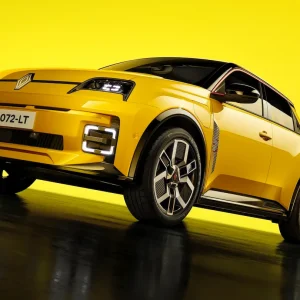Car makers are increasingly adding low rolling-resistance tyres to improve their eco credentials. But what are they and what benefits do they bring? Tom Webster writes
They might all look like black rings of rubber sat at the four corners of a car, but there’s something different about the latest breed of tyre.
Unlike previous technology, low rolling-resistance (LRR) tyres have been designed to improve a car’s fuel efficiency, and therefore CO2 emissions, but – and here’s the key development – without any loss of grip.
As the name suggests, the tyres produce less drag on the road than standard ones, a feat that’s achieved by the addition of silicone to the rubber mixture. This reduces the energy lost through friction.
Although logic might imply that reducing rolling resistance would also reduce grip, especially in the wet, tyre manufacturer Michelin claims it doesn’t. Steve Dolby, a product specialist at Michelin, says the two issues are no longer linked.
“With the latest generation [of LRR tyres] we can separate low rolling-resistance and wet grip,” he says.
Michelin also reckons LRR tyres can improve fuel consumption by up to 4mpg and reduce CO2 by up to 4g/km, and the car makers seem to agree. Many new eco-friendly models come with LRR rubber, particularly as tax bands are determined by emissions. Ford, Toyota, Mercedes, and Volkswagen are among those already offering them as standard, while Peugeot has recently announced it’s fitting LRR tyres to its new small 3008 soft-roader (pictured).
Retrofit it
You don’t have to replace your fleet to feel the benefit of LRR tyres. Steve Bury, head of national accounts at ATS Euromaster, says there is no problem putting them on your existing vehicles when the current tyres wear.
“Retrofitting doesn’t cause any complications, provided they have the same load and speed rating as the tyres they replace,” he says.
But not everyone is convinced they make a difference in the real world. Mike Wise, Kwik Fit Fleet’s boss is yet to be fully persuaded of the benefits.
“They do offer some fuel savings if the conditions are perfect and the driver is a good one,” he says. “[But] I would question if your average fleet driver would notice the difference.”
Then there’s the expense. The increase in LRR development costs means the tyres can be priced up to 10% higher than the standard equivalents. However, Michelin claims its eco tyres can save 80 litres of fuel over a 28,000-mile lifetime, which equates to about £70-£80.
As yet, there are no specific regulations regarding LRR tyres, but this should be clarified soon. The Government has launched a consultation asking for the public’s thoughts on a European Commission proposal that would, in effect, see all tyres have their silicone content increased to improve their efficiency.
The introduction of such a law could have mixed results for customers. On one hand, prices might rise due to the increased manufacturing costs. However, Wise feels it could bring benefits too. He says the technology has been around for a long time, yet has not advanced at any real rate. Progress, he feels, might be made as “legislation may push the technology”.
If manufacturers are given targets to increase the efficiency, with potential financial penalties for not complying, the advancement could come even quicker. And that could lead to a situation where LRR tyres could soon be the only ones available, rather than the pricier eco option. Until then, their main task will continue to be aiding both the fleet manager and car makers in their fight against the taxman.





